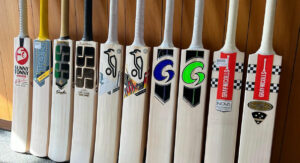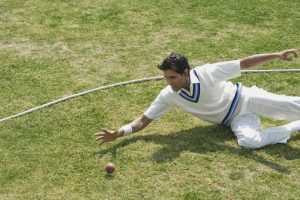When choosing the perfect cricket bat, there is a host of things to consider. Aside from the obvious need to feel comfortable with the bat you’ve selected, you will also need to think about the maintenance and care of your prized possession, so it keeps you performing at your best for years to come. When it comes to caring for your bat, understanding its design features and construction is key to preserving the quality of the materials. No matter how much you’ve spent on a cricket bat, there is no guarantee it will last forever. The care and maintenance of it will help prolong its life so take a look at our handy tips on how caring for your bat will help your get the best performance time and time again.
Prepare your bat for its first use
You might be eager to try out your new bat and test its abilities, but before you take it out onto the cricket pitch, you need to do some pre-preparation before use. This process is called knocking in and involves using a bat mallet or ball and a sock to apply force to the bat, to wear it in. This can usually take approximately six hours before its first use to prevent the bat from breaking.
Some cricket bats do come pre-prepared, although you should always carry out the knocking-in process before the bat is match ready.
Adding protection
To help your cricket bat last longer, applying a small amount of linseed oil approximately three times a season can help strengthen the blade. It can be applied to the whole surface of the bat except the splice area but be careful not to over-oil, as this can actually do more harm than good.
Extra protection for your bat
You may experience minor knocks that cause small cracks to appear on your bat. Having fibre tape to hand can help to fix these small setbacks by using wood glue and wrapping the tape to carefully bind these small imperfections back together. This tape is a must for any cricketer’s kit bag.
Anti-scuff covers
A top tip for providing protection for your bat is by fitting a clear anti-scuff cover. This cover will help to reduce the risk of small cracks along your bat and potentially help it last longer. This type of cover does not affect performance and also offers some protection against moisture being absorbed into the blade.
Use a toe guard
As the toe section of the bat is its weakest point, any major strike by a cricket ball in this region may cause the wood to split. To prevent this from happening, using a toe guard is an ideal option. This effective guard also help to prevent impact when you tap the bat on the floor during a match.
How to store your bat
Storage of your cricket bat is another essential element in preserving its condition and increasing its batting life. Ideal areas to keep your bat include cool and dry places such as a shed or garage which is watertight. Excess moisture can affect the condition of the blade and contribute to premature splitting of the wood.
Another thing to remember is to keep your bat away from dry heat. Be sure not to place it against radiators, fireplaces or in direct sunlight for long periods of time as this can dry the wood out and cause cracking and increase its vulnerability to extensive damage.
Damage to watch out for
Caring for your bat includes watching out for tell-tale signs that it needs some repair work or extra protection. Spotting these minor scuffs or cracks before they develop into major breakages is important for prolonging its performance and longevity. There are a few things to watch out when maintaining your cricket bat including:
Toe swells
Toe swelling on a bat is when dampness and moisture have soaked into the wood fibres around the toe section of the bat. If you’ve spotted this in good time, placing a guard at the bottom will help reduce any splits in the wood when the ball hits it.
For bats that have excessive toe swell, you may be able to salvage it before any permanent damage is done. A good way to do this involves clamping the toe of the bat into a vice and cushioning the sides together. Whilst in this position, leave the bat to dry out and then knock out this area.
Surface cracks
Bats are prone to surface cracks due to the nature of the ball striking its blade. Before these cracks become a permanently damaging aspect, preventing them with fibre tape and protective coverings can bind them together to prolong its use. If the knocking-in process has also been completed effectively, this should also reduce the risk of initial surface cracks forming.
Where the ball hits the bat
Even with the best will in the world, where the ball strikes your bat can determine its fate. In an ideal world, bowlers will deliver the ball perfectly to your blade but in reality this does not always happen. If a cricket ball hits the edge or toe section of the bat, it could do considerable and sometimes irreparable damage. This type of hit could break the willow completely, which will result in you needing to say goodbye to your trusty friend. If you’ve become quite attached to your bat, this could change your game completely whilst you adapt to a new one.
Some well-known brands offer a helping hand too when choosing your new cricket bat. As well handy advice and general information about using the particular bat, some have developed care kits to help you prolong the life of your new purchase.
Unfortunately bats do not last forever but following these handy tips will help you extend the life of your cricket bat for years to come. Contact Meulemans Cricket Centre on +61 893676216 to learn more.



